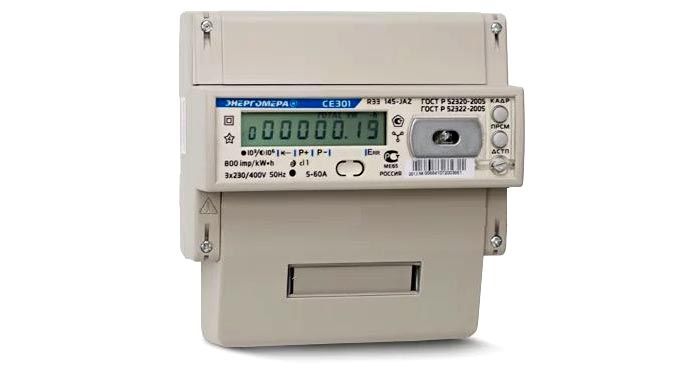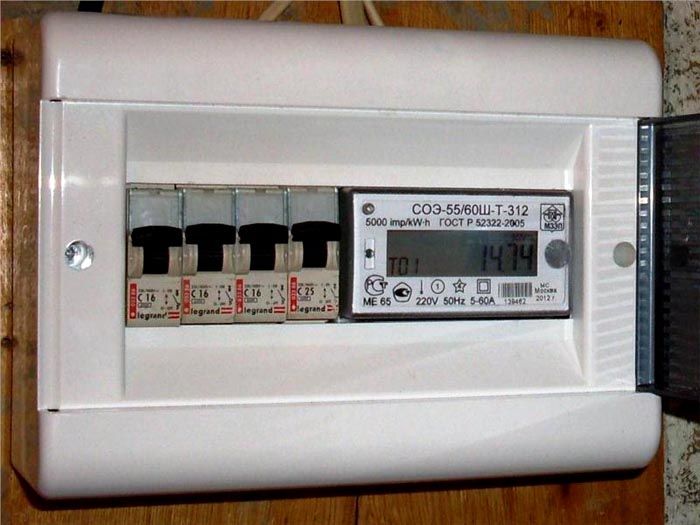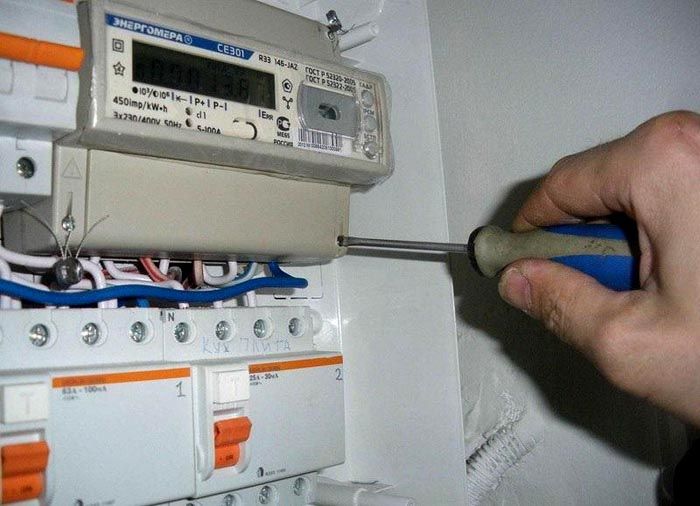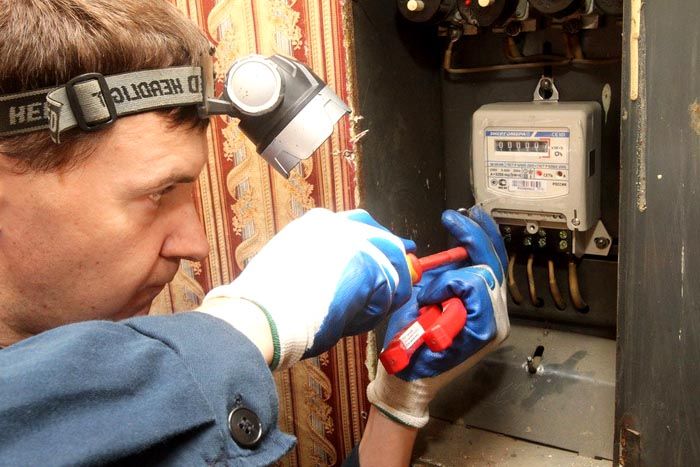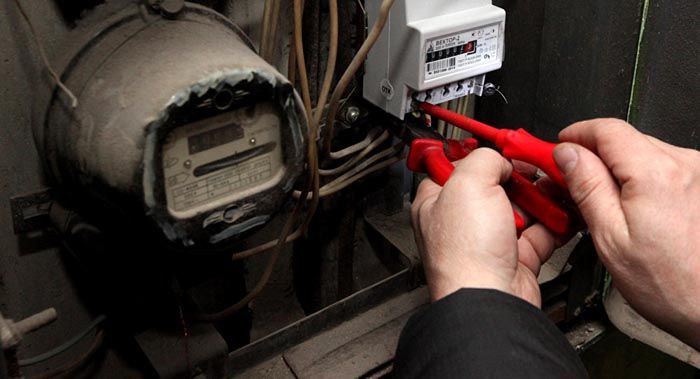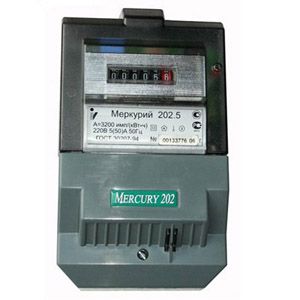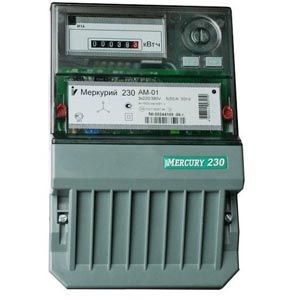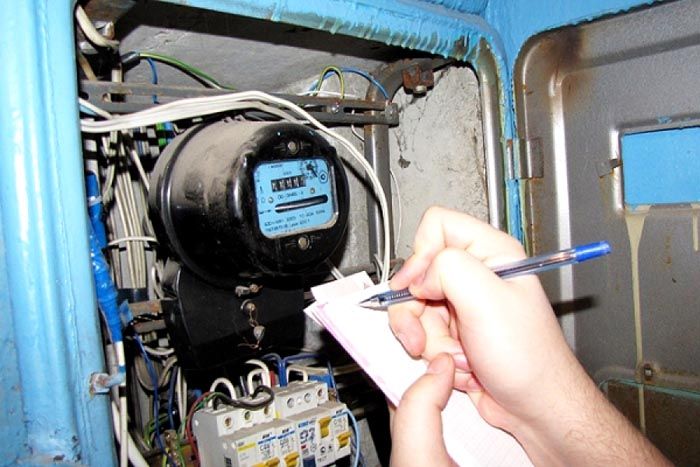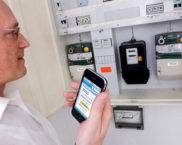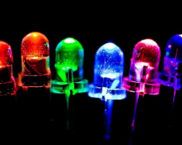Which electricity meter is better to put in an apartment - expert advice
Scientific and technological progress does not stand still, offering more and more new measuring and control devices. But the inhabitants of Russia are in no hurry to throw away the old models, using them to this day. This fully applies to such measuring equipment as electricity meters. Stores are littered with counters of various shapes, sizes and patterns. But they all fall into two groups: induction and electronic. Therefore, when the question is raised, which electricity meter is better to put in an apartment, you will have to choose from these two. In today's review, we will consider the positive and negative aspects of the operation of two types and analyze the prices for them.
The content of the article
- 1 How to choose an electric meter by type
- 2 Varieties of electricity meters by the number of phases
- 3 Choice of electricity meters by tariff
- 4 Selection of electric meters by current strength
- 5 Government Decree No. 442 of 4.05.12 "On the replacement of electricity meters"
- 6 Electricity meter installation requirements
How to choose an electric meter by type
Both models differ dramatically from each other. This also applies to the appearance, and the internal structure, and the principle of operation. And if induction models are a dial with rotating numerals, then electronic ones are a display showing indicators in the form of electronic light numbers. And this is just an external difference. Now, how they differ purely constructively.
Induction electricity meter
The principle of operation of this device is based on two coils. The first is the voltage coil. Its main functions are to limit the actions of alternating current, or rather, to block interference. It is this coil that generates a magnetic flux that corresponds to the voltage in the network.
The second is the current coil. It creates an alternating current in the device, which, in terms of its performance, is equal to the current in the network. When the two coils operate, a magnetic field is generated that acts on the disc made of aluminum. Under the action of the field, electromagnetic forces are generated.They then rotate the disk, on the axis of which the counting device is fixed. The latter is based on a worm gear through which rotation is transmitted to the dial. The stronger the signal inside the magnetic field, that is, the more power consumption, the faster the disk spins.
It should be noted that induction devices are gradually being phased out. But statistics show that there are tens of millions of models in operation.
Now the advantages and disadvantages:
| Benefits | disadvantages |
|---|---|
| Reliable in operation | Low accuracy class - 2.0 |
| Huge service life, confirmed by several decades | Current and voltage consumption for own needs |
| When the load on the network decreases, the error of the indicators increases | |
| Does not respond to power surges | Big sizes |
| The possibility of electricity theft | |
| Acceptable price | When accounting for active and reactive electricity, two meters must be installed |
| Current consumption is only counted in one direction |
Until recently, induction metering devices for electricity had no alternative. Today this is a primitive design, albeit simple, but with large errors in taking readings.
Electronic electricity meter
The principle of operation of this type of device is based on the conversion of an analog signal to digital. The resulting code goes to the microcontroller, where it is decoded and enters the display in the form of readings.
Now about the advantages and disadvantages:
| pros | Minuses |
|---|---|
| Accuracy class - 1.0 and higher | High price compared to induction models |
| Several tariffs - from two and more | |
| When accounting for different energies, one counter is used | |
| Accounting and control is carried out in two directions | |
| Controlled not only the amount of power, but also its quality | Impossible to repair |
| Data is stored for a long time with easy access to it | |
| Fixing unauthorized electricity consumption | |
| It is possible to take readings remotely, taking into account the use of various communication networks | |
| The ability to use programs for automatic accounting | High sensitivity to the quality of the supplied power |
| The interval between checks is large | |
| Small size |
Which electric meter is better to put in an apartment of the two indicated? How critical are the advantages of one and the disadvantages of the other? Here it is necessary to understand that the accuracy class "2.0" is normal for everyday life. Because it means that the actual consumed electricity from the readings may differ by only 2%. More accurate instruments are best used in industrial plants where electricity consumption is huge, which means that the error may be more significant.
Varieties of electricity meters by the number of phases
There are two groups here: one- and three-phase. Before choosing an electric meter for an apartment from these two, you need to look into the switchboard. If two wires enter the apartment, it means that it is provided with one phase. Therefore, the choice is determined - a single-phase electricity meter. If four, then three phases and a neutral wire are included. Accordingly, a three-phase model is installed in the shield. But most often apartments are provided with single-phase networks. Three-phase electricity meters are more often installed in private houses with a large number of rooms and floors.

Single-phase meter: it has 4 terminals - two for the input, two for the output, the latter are led to the apartment
Attention! Apartments with power in one phase are provided with a voltage of 220 V. In three phases - 380 V. In the latter case, the phases are scattered over the sections so that they make up loops with a voltage of 220 V. For example, in a three-story house, the phases are distributed separately for each floor.
Choice of electricity meters by tariff
First of all, you need to understand what tariffs mean and why they are different. The bottom photo shows how electricity consumption changes during the day. It clearly shows that the main peak falls in the morning and evening, when the whole family gathers in the apartments. But at night, consumption drops sharply, because everyone is asleep. Therefore, power supply organizations have set two tariffs:
- from 7.00 to 23.00 - increased;
- from 23.00 to 7.00 - reduced.
By installing a single-phase two-tariff meter in an apartment, you can save a lot if you transfer some household chores to the night time. For example, you can charge your washing machine or dishwasher. They still work in automatic mode, and there is no need to monitor them. A three-phase two-rate meter works on the same principle.
Why was the differential method of accounting for the consumption of electric current introduced? There is only one reason - to unload the morning and evening highs in order to guarantee the reliability of the electricity supply to apartment buildings, encouraging residents to use electrical appliances at night.
As for single-tariff devices, and they include all induction models and some of the electronic ones, they take into account the current consumption around the clock at one tariff, which is set for each region separately.
Now to the question of which electric meter is better to put in an apartment and in a private house, depending on the number of tariffs. It is difficult to give recommendations in this case, but one thing can be said, if the tenants of the apartment often use various household appliances, then a two-tariff device must be installed. This also applies to the owners of private houses. Here you can also add what heating boilers are used in the house. If electric, then a two-tariff device must be installed. In apartments where there is nothing besides a TV set, a single tariff is suitable.
Selection of electric meters by current strength
This is an important characteristic, on which the correct operation of both the device itself and the entire electrical wiring... How easy is it to determine which electricity meter should be installed in the apartment so as not to be mistaken? It is necessary to pay attention to the phase wire (it is thicker than the zero wire), which enters the apartment. There is a certain dependence of the cable cross-section on the strength of the current passing through it. The table below shows the ratios of some positions:
| Cable section, mm² | Copper wire | Aluminum wire | ||||
|---|---|---|---|---|---|---|
| Current strength, A | power, kWt | Current strength, A | power, kWt | |||
| 220 V | 380 B | 220 V | 380 B | |||
| 1 | 14 | 3 | 5,3 | - | - | - |
| 2 | 19 | 4,1 | 7,2 | 14 | 3 | 5,3 |
| 4 | 27 | 5,9 | 10 | 21 | 4,6 | 7,9 |
| 6 | 34 | 7,4 | 12 | 26 | 5,7 | 9,8 |
| 16 | 80 | 17 | 30 | 55 | 12 | 20 |
| 25 | 100 | 22 | 38 | 65 | 14 | 24 |
Attention! The table shows the parameters of electrical networks built by the type of hidden wiring.
In modern apartments, a copper cable with a cross section of no more than 6 mm² is usually carried out. So, according to the table, it will withstand the current in the network with a force of 34 A. In the houses of the old building, an aluminum cable with a cross section of no more than 4 mm² was laid.
Pay attention once again to the table, which shows the dependence of the current strength on the power consumption. The last parameter is the total power of all household appliances and lighting. The power of the devices is determined by the passport or on a metal tag (nameplate). There is a power formula in which the dependence with the current strength is direct:
P = U × Iwhere
- U - mains voltage (220 or 380),
- I - current strength.
This means that the current strength can be calculated using this formula:
I = P / U
The main thing here is to take into account the power of all devices.
Government Decree No. 442 of 4.05.12 "On the replacement of electricity meters"
What provisions you need to know in order not to get into situations, the result of which may be disastrous for apartment owners. The situation itself regulates the energy market. It clearly states the responsibilities of the electricity supplier and consumers.But for the latter, the main point is the replacement of old devices with new electronic ones. And that's the whole problem. Why?
The resolution states that the replacement must be carried out necessarily at the expense of the apartment owner. But here a contradiction arises. Sami electricity meter readings are needed by the energy supplying organization, they are paid money for the supplied kilowatts. Therefore, the owners of apartments and houses are in no hurry to replace them. In addition, if a decision is made to install a new device, then you should not purchase it with a high class of accuracy, because the latter is expensive. Why overpay for the fact that you yourself do not need.
The life of the electric meter in the apartment
Many consumers confuse the two concepts:
- The service life is full, it is indicated by the manufacturer in the passport, as a warranty period. It is very different for different devices. For example, induction up to 50 years, electronic 25 ÷ 30. These numbers can be considered as the period for replacing electricity meters in an apartment. In addition, a serious breakdown, which will be more expensive to fix than buying a new device.
- Interval service life. In the passport of the counter this indicator is indicated. It indicates when the device has been tested for compliance with the declared parameters. The first check is carried out by the manufacturer himself in his own laboratory. He indicates the number of checks in the passport.
So, in Resolution No. 442, the terms of interchecking operation are set. Induction single-phase electric meters should be checked once every two years, three-phase once a year. As for electronic models, they can be checked once every 4-16 years. The designated fork is so big just because it talks about two different checks.
- Metrological is carried out once every 16 years.
- On the reliability of the internal structure once every 6 years.
The last check is assigned by the power sales organization, depending on the schedule of preventive maintenance. And it doesn't have to be 6 years old. Prevention itself is removing the seal, removing the cover, cleaning the contacts, tightening the screws. Then the device is sealed again.
Attention! Since 2013, all electric meters with an accuracy class of 2.0 are not accepted for inspection and cannot be repaired. So if the verification time has come, then it is worthwhile to study in advance how much a new electricity meter with an accuracy class of 1.0 costs.
How much does it cost to install an electric meter in an apartment
To begin with, you cannot install the meter yourself, if you are a non-specialist in the field of electrical engineering. Installation and connection must be carried out by an electrician authorized to carry out this type of work. It is not necessary to call a regular electrician to do this. This can be a self-employed person or a representative of a private company. But after installation, it is necessary that the device be sealed. Therefore, it will be necessary to call a representative of the power supply organization. He will install the seal and draw up an acceptance certificate.
Installation costs vary from region to region. But averaged for a single-phase device is 1500 ÷ 2500 rubles, for a three-phase device 2500 ÷ 3500 rubles.
How much does it cost to replace an electric meter in an apartment
Before you change the electricity meter in the apartment, you need to call the representative of the energy supplying organization to remove the seal. You cannot do this without permission. You will be fined. After that, installation, sealing and drawing up of an act is carried out.Replacement rates are slightly higher because dismantling is added to the installation. It costs between 500 ÷ 1000 rubles.
How much do electricity meters cost
It is wrong to ask which electricity meter is better for an apartment only at a price.The cost of the device depends on the number of phases, on the accuracy class, power, capabilities self data transfer and other parameters. Let's take the brand "Mercury" and consider the price values depending on these parameters:
Electricity meter installation requirements
In apartments, switchboards are installed strictly in accordance with the requirements of the regulatory framework. It clearly states that the device must be installed:
- at a height not higher than 1.7 m;
- the contact area of the meter from the floor should not be located below 0.8 m;
- the device in the panel must be fixed rigidly;
- cable up terminals must be solid (without twists and joints);
- free access must be provided for taking readings, service, maintenance and repair.
With the apparent complexity, the choice of an electric meter is quite simple. You just need to prioritize the technical characteristics of the device. But it is not recommended to install it on your own. If you have any questions regarding the correct choice, then write in the comments and our editors are ready to answer them.








